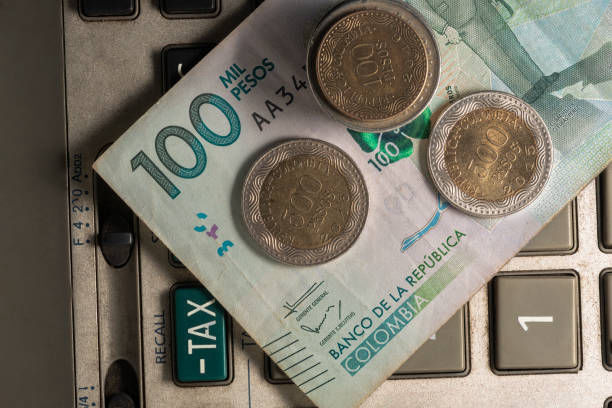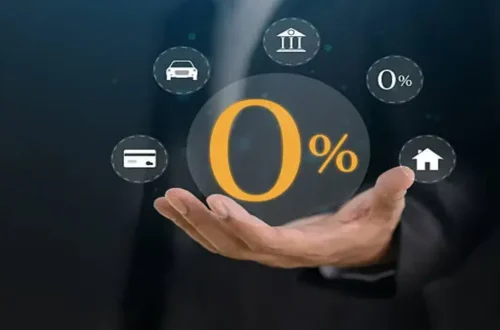The concept of papel moneda, or paper money, may seem ordinary today because we handle banknotes daily—whether to pay for groceries, transportation, or other needs. Yet behind these simple pieces of printed paper lies one of humanity’s greatest economic inventions. Paper money reshaped how societies exchange goods, store value, and build trust in abstract systems of worth. From its ancient beginnings in Asia to the modern age of digital currencies, the story of papel moneda is both fascinating and essential to understanding global economics.
This article offers a deep exploration of what papel moneda is, how it evolved, its role in world economies, its advantages and challenges, and its potential transformation in the digital era. More than just a historical overview, it is an exploration of trust, technology, and human innovation—the three pillars that sustain modern money.
1. What Is Papel Moneda?
Papel moneda refers to banknotes issued by a central authority, such as a government or central bank, that function as legal tender. These notes represent fiduciary value, meaning their worth is based on trust rather than intrinsic material value. In contrast to gold or silver coins—whose value was inherent in the metal itself—paper money derives its purchasing power from collective belief and governmental backing.
In simple terms, papel moneda is a symbol of confidence. It signifies that society agrees the note has value because the issuing authority guarantees it can be used to pay for goods, services, or debts. This system allows economies to grow far beyond the limitations of physical metal reserves.
| Aspect | Papel Moneda (Paper Money) | Metallic Money (Coins) |
|---|---|---|
| Nature | Represents value; no intrinsic worth. | Has inherent material value. |
| Issuer | Central Bank or State. | Mint or treasury. |
| Base of Value | Trust and legal recognition. | Metal content (gold, silver, copper). |
| Portability | Light and convenient. | Heavier and less practical for large sums. |
| Durability | Can wear out but easily replaced. | Very long-lasting. |
Thus, papel moneda is more than currency—it is a reflection of economic trust in paper form.
2. Historical Origins of Papel Moneda
The origins of papel moneda can be traced back over a thousand years to ancient China, during the Tang and Song Dynasties. Around the 7th century, Chinese merchants began using paper receipts as a safer alternative to carrying heavy copper coins. These receipts, representing stored value in warehouses, evolved into the first prototypes of banknotes.
During the Song Dynasty (11th century), the government formalized this system by issuing the first official state-backed paper currency, known as jiaozi. These early notes were printed on special paper with intricate designs to prevent counterfeiting. The success of this system spread across Asia and eventually reached Europe through trade routes such as the Silk Road.
In Europe, the concept gained traction much later. The Stockholm Bank in Sweden issued the first European banknotes in the 17th century, and by the 18th century, England, France, and the American colonies had adopted similar systems. The invention revolutionized commerce by enabling faster and more efficient exchange.
3. The Transition from Metal to Paper
Before papel moneda, global economies relied almost entirely on metal-based currencies. Gold and silver coins were universally valued because of their intrinsic worth. However, the use of precious metals presented several problems—limited supply, difficulty in transport, and vulnerability to theft.
The emergence of paper money provided several key advantages:
| Feature | Metal Currency | Papel Moneda |
|---|---|---|
| Supply Control | Dependent on mining output. | Adjustable by central banks. |
| Transportation | Heavy and inconvenient. | Lightweight and easy to carry. |
| Storage Safety | Risk of theft or loss. | Easier to store in banks. |
| Economic Flexibility | Fixed by metal reserves. | Expands with market needs. |
| Production Cost | High due to metal value. | Low; only printing cost. |
The transition marked a monetary revolution, shifting economies from tangible wealth to symbolic value. It paved the way for modern banking, where paper, backed by trust, could represent enormous financial power.
4. The Evolution of Papel Moneda in the Modern World
The evolution of papel moneda mirrors the evolution of human civilization. After centuries of experimentation and gradual acceptance, nearly every modern nation now issues its own official banknotes.
Major Milestones in the Evolution of Papel Moneda
| Period | Key Development |
|---|---|
| 7th–11th Century | Chinese merchants introduce paper receipts. |
| 11th Century | Song Dynasty creates first government-issued notes. |
| 17th Century | Sweden issues Europe’s first paper money. |
| 18th Century | Widespread adoption in colonial America and Europe. |
| 19th Century | Creation of national central banks. |
| 20th Century | Abandonment of gold standard; pure fiat money introduced. |
| 21st Century | Emergence of digital and virtual currencies. |
The 20th century saw the most profound change when the gold standard—which tied paper money to fixed gold reserves—was abandoned. From then on, papel moneda became fiat currency, backed solely by government decree and the faith of its users.
5. Characteristics of Modern Paper Money
Modern papel moneda is the result of advanced design, technology, and anti-counterfeiting measures. It combines artistic, cultural, and scientific elements to ensure both usability and security.
Key Features of Modern Banknotes
- High-Durability Materials: Many countries now print banknotes on polymer rather than paper, increasing resistance to moisture and wear.
- Complex Security Features: Watermarks, holograms, color-shifting inks, and microtext make counterfeiting extremely difficult.
- Distinctive Designs: Each denomination carries national symbols, historical figures, and cultural heritage images.
- Serial Numbering: Unique identifiers prevent duplication and enable tracking.
- Tactile Features: Raised printing helps visually impaired users identify denominations.
| Security Feature | Purpose | Example |
|---|---|---|
| Watermark | Visible when held to light; authenticates note. | Portraits or emblems. |
| Security Thread | Metallic line embedded in paper. | Found in USD and Euro notes. |
| Color-Shifting Ink | Changes color under light. | U.S. $100 bill. |
| Holographic Strip | Reflective 3D image for high security. | Euro notes. |
| Microprinting | Fine text, visible under magnification. | Used in most currencies. |
These features combine to create currency that is both functional and artistic, reflecting a nation’s identity while ensuring financial security.
6. Functions of Papel Moneda in the Economy
The papel moneda serves as a cornerstone of any economic system, performing the three classical functions of money:
- Medium of Exchange: It facilitates trade by eliminating the inefficiencies of barter systems.
- Unit of Account: It provides a standardized measure for pricing goods and services.
- Store of Value: It retains purchasing power over time, allowing savings and investment.
Additionally, papel moneda acts as a means of deferred payment, allowing credit systems to flourish. Its universal acceptance enables national and international trade to occur smoothly.
7. Papel Moneda and the Role of Central Banks
The issuance and regulation of paper money fall under the authority of central banks, such as the Federal Reserve (U.S.), the European Central Bank (EU), or the Bank of England. Their responsibility is to maintain the stability and credibility of the national currency.
Central Bank Responsibilities Related to Papel Moneda
| Function | Explanation |
|---|---|
| Issuance | Controls production and distribution of legal tender. |
| Monetary Policy | Adjusts supply of money to control inflation or deflation. |
| Currency Stability | Maintains domestic and foreign exchange rate balance. |
| Anti-Counterfeiting | Develops and updates security features. |
| Public Confidence | Ensures people trust the national currency. |
Through these functions, papel moneda becomes a powerful policy instrument, influencing everything from inflation rates to employment levels.
8. Advantages of Papel Moneda
Papel moneda revolutionized the global economy for several reasons:
- Lightweight and Portable: It simplifies everyday transactions compared to heavy coins or commodities.
- Flexible Supply: Governments can increase or decrease the money supply as needed.
- Lower Production Costs: Printing banknotes is cheaper than minting metal coins.
- Universal Acceptance: It is recognized as legal tender for all debts and payments.
- Enabler of Economic Growth: Simplifies lending, investment, and consumption.
These benefits allowed economies to scale rapidly, fueling industrialization and globalization.
9. Disadvantages and Risks of Paper Money
Despite its strengths, papel moneda is not without flaws. Its dependence on trust and political stability makes it vulnerable.
| Challenge | Description | Economic Impact |
|---|---|---|
| Inflation | Over-issuance decreases purchasing power. | Devaluation and price rise. |
| Counterfeiting | Fake currency undermines confidence. | Loss of credibility and value. |
| Physical Deterioration | Notes wear out or get damaged. | Cost of reprinting and replacement. |
| Overdependence on Policy | Central bank errors can cause crises. | Hyperinflation or recession. |
| Transition to Digital Economy | Reduced demand for physical cash. | Risk of exclusion for non-digital users. |
Thus, maintaining a stable papel moneda system requires prudent monetary management, effective governance, and ongoing innovation.
10. Papel Moneda and Inflation
Inflation occurs when too much money circulates relative to goods and services available. Since papel moneda can be printed in unlimited quantities, the temptation for over-issuance has historically led to crises.
For example, during Germany’s Weimar Republic in 1923, excessive printing of money to pay war debts caused hyperinflation—people needed wheelbarrows of cash to buy bread. This illustrates that papel moneda’s value is not physical but psychological, depending on faith in the system.
Modern central banks now use complex tools—interest rates, reserve requirements, and bond operations—to control inflation and maintain trust.
11. Papel Moneda vs. Digital and Cryptocurrency Systems
The 21st century has seen rapid advances in digital payment systems and cryptocurrencies. This raises a critical question: is papel moneda becoming obsolete?
| Feature | Papel Moneda | Digital/Crypto Currency |
|---|---|---|
| Form | Physical (paper/polymer). | Electronic or decentralized. |
| Accessibility | Available to everyone. | Requires technology and internet. |
| Security Risks | Counterfeiting or theft. | Cyberattacks or data breaches. |
| Anonymity | High in cash transactions. | Varies; cryptocurrencies can be anonymous or traceable. |
| Control | Centralized under state authority. | Decentralized in blockchain systems. |
While digital systems grow rapidly, papel moneda remains vital in many regions, especially where technology infrastructure is limited. It also provides privacy and independence that digital forms may not guarantee.
12. The Cultural and Symbolic Power of Paper Money
Beyond economics, papel moneda holds immense cultural significance. Each banknote tells a story—of heroes, achievements, art, and national pride. Banknotes often depict scientists, poets, monuments, and animals, turning them into miniature ambassadors of heritage.
Moreover, paper money acts as a symbol of sovereignty. When a nation issues its own currency, it asserts its independence and control over economic destiny. That’s why national currencies are treated as political and cultural symbols as much as financial tools.
13. Technological Innovations in Banknote Design
Modern papel moneda incorporates cutting-edge technologies that blend aesthetics, durability, and security.
Key Innovations Include:
- Polymer Substrates: Waterproof, durable, and recyclable materials replacing cotton paper.
- Embedded Microchips: Some countries test contactless verification using NFC chips.
- Color-Shifting Holograms: Enhance visual security and prevent duplication.
- UV and Magnetic Inks: Detectable only under specialized light or sensors.
- Braille Features: Promote accessibility for visually impaired users.
These innovations ensure that papel moneda remains resilient and relevant in an increasingly digital world.
14. Papel Moneda in a Globalized Economy
In today’s interconnected markets, certain currencies play dominant international roles. While every country issues its own papel moneda, a few have achieved global acceptance.
| Currency | Global Role | Approximate Share of World Transactions |
|---|---|---|
| U.S. Dollar (USD) | Primary global reserve and trade currency. | 59% |
| Euro (EUR) | Regional and international trade currency. | 20% |
| Japanese Yen (JPY) | Asian trade and investment. | 5% |
| British Pound (GBP) | Financial services and reserves. | 4% |
| Chinese Yuan (CNY) | Rapidly growing influence in Asia. | 3% |
These dominant papel monedas underpin the structure of global trade, foreign exchange, and investment markets.
15. Papel Moneda and the Future of Money
As societies embrace digital transformation, papel moneda faces both decline and adaptation. Central banks worldwide are exploring Central Bank Digital Currencies (CBDCs)—digital versions of national currencies that maintain official backing.
The future will likely be hybrid, with paper and digital money coexisting. Cash will continue to serve as a universal backup, especially during technological disruptions or emergencies. Meanwhile, CBDCs will offer transparency, speed, and traceability.
In essence, papel moneda will evolve rather than vanish—shifting from physical paper to a symbolic representation of trust across multiple mediums.
16. The Psychological and Social Dimensions of Paper Money
Money is not merely an economic tool; it is a social contract. Papel moneda embodies the invisible web of trust connecting citizens, governments, and institutions. When people lose faith in this system, economies collapse regardless of resources.
Holding physical money also provides a psychological sense of control and security. Even in digital societies, many individuals prefer tangible cash as a safeguard against instability, cyber risks, or system failures.
Therefore, papel moneda persists not only for economic convenience but also for emotional reassurance.
17. Sustainability and the Environmental Impact
The production and circulation of papel moneda carry environmental implications. Traditional cotton-paper notes have limited lifespans and require constant replacement. However, new technologies aim to reduce this impact.
| Material Type | Average Lifespan | Environmental Benefit |
|---|---|---|
| Cotton-Paper | 2–4 years | Biodegradable but less durable. |
| Polymer | 7–10 years | Longer life; recyclable. |
| Hybrid (Cotton + Polymer) | 5–8 years | Balance between flexibility and eco-friendliness. |
By adopting polymer-based and recyclable banknotes, countries can reduce waste and printing frequency, promoting sustainability in the financial ecosystem.
18. Conclusion: Papel Moneda as a Symbol of Trust and Progress
The story of papel moneda is the story of human civilization’s journey from tangible wealth to abstract confidence. From the bustling markets of ancient China to the digital economies of the 21st century, paper money has symbolized innovation, trust, and adaptability.
While the physical form of money continues to evolve, its essence remains unchanged: a shared belief in value. Papel moneda reminds us that economies thrive not because of paper or metal, but because of the mutual trust that connects people in trade, cooperation, and vision.
Even as we step into the age of cryptocurrencies and central bank digital money, papel moneda remains an enduring testament to our ability to create order, meaning, and progress through trust.
Frequently Asked Questions (FAQs)
1. What does “papel moneda” mean?
“Papel moneda” is Spanish for “paper money.” It refers to government-issued banknotes that serve as legal tender in an economy.
2. Who is responsible for issuing papel moneda?
Central banks or national monetary authorities are responsible for producing, distributing, and regulating the use of paper money.
3. Why does paper money have value if it’s only paper?
Its value comes from collective trust and legal enforcement by the state, not from intrinsic materials like gold or silver.
4. How is modern papel moneda protected from counterfeiting?
Through advanced security features such as holograms, watermarks, microprinting, and color-shifting inks that are difficult to replicate.
5. Will papel moneda disappear in the future?
While digital currencies will grow, paper money will likely continue to exist, especially for accessibility, privacy, and emergency use.





